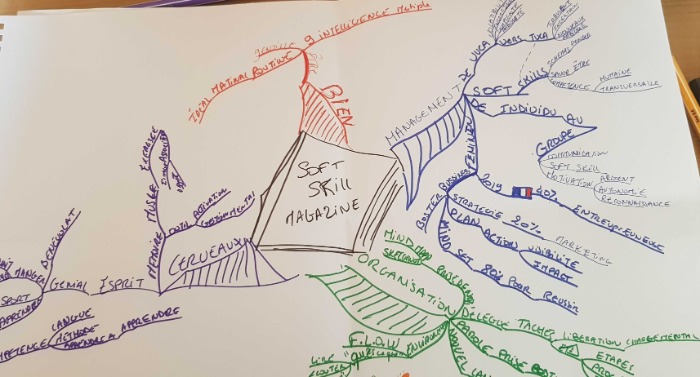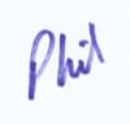Natural Intelligence displayed on a Mind Map!
Tweak the Tools!

So much to go into in this busy Mind Map!
At first glance, you may think - Not very effective! Although it feels rather messy that can be finessed by just a couple of very short coaching tips!
Let’s start with the Central Image - we prefer to see a unique and compelling Central Image with AT LEAST three colours. Sadly that means that this Central Image doesn’t score very high on the Paris Marking Scheme which is a shame because the use of perspective on the central image is very interesting indeed. A few seconds more could have improved this Central Image by adding just another two colours in there.
The Main Branches should connect to the Central Image - in this Mind Map there are a few gaps that could have been improved on .. but these are minor issues indeed.
There is also a distinct lack of images which is surprising considering that there were plenty of images in the source material and plenty of time to complete the task. We know and understand how powerful images are when incorporated into a Mind Map which is why in a Championship we mark one point for each new image up to a maximum of ten points - those are easy marks to gather and improve the memorability of a Mind Map hugely.
My Tip for the Future!
I think the biggest challenge with this Mind Map .. is that the competitor was really demonstrating their intelligence but the combination of felt pen and A3 paper just made it feel very congested and a little overwhelming.
Simply replacing the felt pens with finer pens and pencils would immediately solve that issue - leaving space so that the competitor did not have to “double back” on their branches and contort word positioning, You can see how when they swapped out to a finer biro pen the congestion immediately eased.
Brilliant demonstration of Intelligence!
There is masses of detail in this Mind Map - a huge amount of carefully curated keywords and appropriate hierarchical organisation. This competitor is not only well-read but very confident linguistically too! The art and craft of Mind Mapping will come with time - but a quick wit, reasoning skills, and linguistic intelligence take a little longer to develop. This competitor has all of these skills and more.
It’s actually a fairly effective Mind Map - and to be honest it is no more “messy” than some of the “working Mind Maps” I have shared in our coaching group. As a busy dyslexic, I can assure you that sometimes the messiest Mind Maps end up being the most effective. Phil will attest to some truly ugly Mind Maps that we have had pinned up for months because they were the very messy first iterations of a project and therefore the most valuable!
Data has been collected, collated, and displayed .. and although I would prefer it to look a little more refined in next year's Championship I think a shift to a higher quality of pen will make a huge difference.
I do hope this competitor comes back to the 2022 Championship - I would love to see what they could accomplish combining their obvious natural intelligence with a set of fineliners and some coloured pencils!

The Basic Ordering Idea Branches
If you choose to use patterns in your main branches instead of solid colour then there are lots of options: chevrons; waves; chequerboard; 3-D stripes; polkadots; zigzags; the list is endless. They don’t take long to draw or require great artistic talent. Using similar thin stripes is a missed opportunity. The contrasting colours are well chosen. Slim down the main branches. They are a bit on the chunky side. You’ll be well on the way to a beautiful Mind Map.
Layout
Some of the branches are a little straight or angular. I think Elaine’s recommendation of better pens will allow more space and consequently solve any layout and neatness problems. It really doesn’t take a lot to turn a well thought out messy Mind Map into a well thought out winning one.
Everyone is an Artist – Use Images
I wonder if the competitor is under the false impression they can’t draw and thus didn’t try. Just because someone in the past criticised your drawing abilities should not be a burden you carry throughout life. Tony Buzan believed for a long while that he couldn’t draw. In particular he found it impossible to draw is simple 3-D cube. He understood conceptually it had six square faces and twelve edges but couldn’t seem to represent them on a flat sheet of paper. Once shown that there are only vertical, horizontal and diagonal lines and nothing else, he amazed himself that it was actually easy. He ended up a competent artist. If you feel you can’t draw, sign up for an art class, do a cartooning course or just read some books on drawing and practise seeing. Copying images is a great first step. If you struggle with this, a secret trick is to trace images using a light-box (or windowpane).


